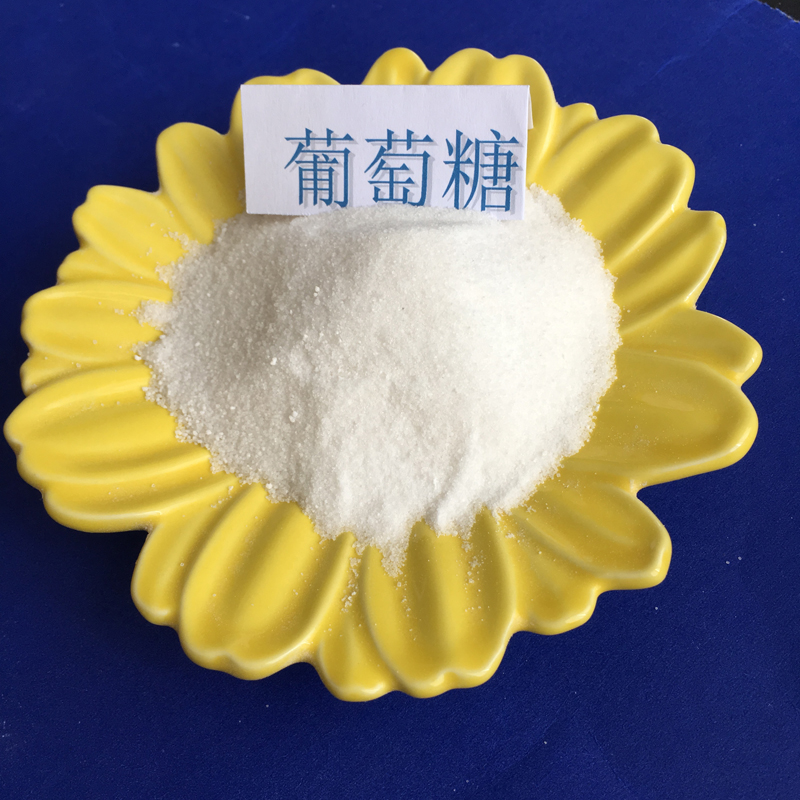
Glucose (chemical formula C6H12O6) is also known as corn sugar, maize sugar, referred to as glucose. Chemical name: 2,3,4,5,6-pentahydroxyhexanal, English another name: Dextrose, Cornsugar, Grapesgar, Bloodsugar. It is the most widely distributed and most important monosaccharide in nature. It is a polyhydroxy aldehyde.
Pure glucose is colorless crystal, sweet but not as sweet as sucrose (the average person can't taste the sweetness), soluble in water, slightly soluble in ethanol, and insoluble in ether. The natural glucose aqueous solution is optically rotated to the right, so it belongs to "dextrose".
Glucose plays an important role in the biological field. It is the energy source and metabolic intermediate of living cells, the main energy-supplying substance of living things. Plants can produce glucose through photosynthesis. It is widely used in the field of candy manufacturing and medicine.
Chemical nature: It is the most widely distributed monosaccharide in nature. Glucose contains five hydroxyl groups, one aldehyde group, having the properties of a polyol and an aldehyde.
It is easily decomposed by heating under alkaline conditions. It should be kept in a sealed state. It is quickly absorbed after oral administration and is used by tissues after entering the human body. After 1kg of glucose is completely oxidized by the human body, 2870KJ of energy is released. Some of this energy is converted into 30 or 32mol of ATP. The rest of the energy is released as heat to maintain body temperature. It can also be converted into glycogen or fat by liver or muscle.
(1) The aldehyde group in the molecule is reducible and can react with a silver ammonia solution: CH2OH(CHOH)4CHO+2Ag(NH3)2OH (water bath heating)→CH2OH(CHOH)4COONH4+2Ag↓+3NH3+H2O, is oxidized Ammonium gluconate.
(2) The aldehyde group can also be reduced to hexahexol.
(3) There are a plurality of hydroxyl groups in the molecule, which can be esterified with an acid.
(4) Glucose undergoes an oxidation reaction in the living body, releasing heat (C6H12O6+6O2 (oxygen) + 6H2O==6CO2+12H2O+ energy).
(5) Glucose can be obtained by hydrolysis of starch under the action of enzyme or sulfuric acid.
(6) Plant photosynthesis: 6CO2+6H2O (chlorophyll, sunlight catalysis)--C6H12O6+6O2.
(7) Reaction equation of glucose with fresh copper hydroxide:
CH2OH(CHOH)4CHO+2Cu(OH)2-heating->CH2OH(CHOH)4COOH+Cu2O↓+2H2O.
(8) Glucose is decomposed into water and carbon dioxide under certain conditions. [3]
(9) Hydrolysis of maltose: C12H22O11+H2O (catalyst)→2CH2OH(CHOH)4CHO
(10) Starch and cellulose hydrolysis: (C6H10O5)n+nH2O (catalyst)→nCH2OH(CHOH)4CHO